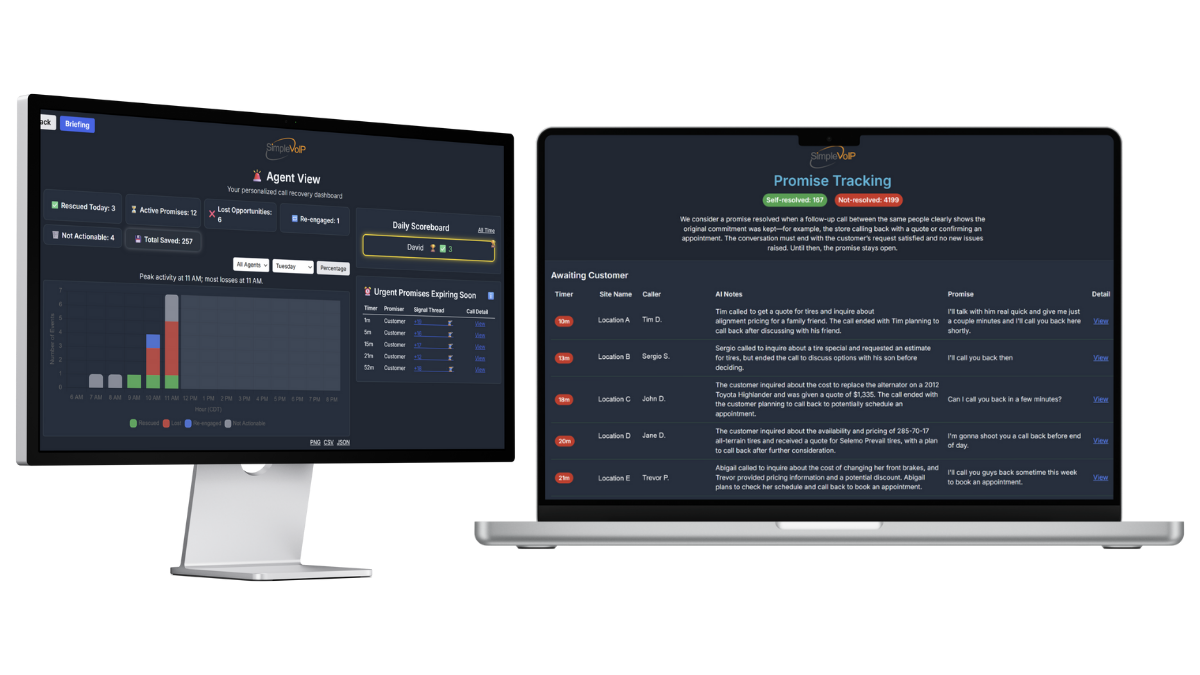In any business, especially in an industry like UCaaS, managing client expectations while ensuring deliverables are timely can make or break a project. At SimpleVoIP, we’ve learned that the key to a successful client relationship is clear communication, proactive management, and flexibility. These elements help us lead even the most complex projects with confidence.
Account Manager Casey McManus has firsthand experience managing enterprise-level clients and large-scale rollouts. Through years of guiding clients through every step of the process, he’s picked up strategies to keep projects on track with satisfied clients. This article explores some of these insights, focusing on setting clear expectations, keeping deliverables on schedule, and building long-term client relationships.
Understanding the Client’s End Goal
Every successful project starts with one simple question: What does the client want to achieve?
For Casey, understanding the client’s end goal is the first step in managing their expectations. It’s important to set realistic targets and timelines from the outset. For example, clients often have ambitious plans—rolling out a service across multiple locations within a tight timeframe. Casey’s approach is to break this big picture down into smaller, more manageable milestones.
“We always look at the end of the project and work our way backward,” he explains. This reverse engineering process allows the team to create bite-sized tasks for each day, making it easier to track progress and adjust along the way if necessary. By breaking the project into daily goals, SimpleVoIP ensures that nothing slips through the cracks and that the team is continuously moving toward the client’s end goal.
Setting Realistic Timelines
Once the client’s objective is clear, it’s all about setting realistic timelines. Some clients may not fully understand the complexity of a large-scale UCaaS rollout. It’s up to the project manager to explain the steps involved, such as hardware delivery, installation schedules, and training. Clients appreciate having a clear understanding of what’s required and when they can expect each milestone to be completed.
Casey emphasizes the importance of forecasting early and making sure everyone involved knows the timeline. “If the client needs something done in a few months, it gives us a good sense of how aggressive we need to be with installations and hardware procurement,” he notes.
Providing this clarity not only manages client expectations but also fosters trust. By keeping them informed about every step, clients feel more in control and confident that the project is progressing as planned.
Educating the Client Along the Way
A key part of managing expectations is client education. Most clients won’t be familiar with all the technical aspects of a UCaaS project or understand how each piece fits together. That’s where the project manager’s role comes in—acting as a guide, walking the client through each phase of the project.
Casey explains, “No two customers are alike, and every project we handle is unique. We make sure the client understands any limitations or challenges that may arise.” This transparency ensures that when inevitable speed bumps occur, the client still feels assured.
At SimpleVoIP, we provide clients with case studies and examples from similar projects to help them visualize how their own projects will unfold. Whether it’s understanding installation timelines or getting familiar with new tools, clients who are well-informed are less likely to feel overwhelmed.
Balancing Client Demands with Technical Limitations
Another challenge that often arises during projects is balancing client demands with technical limitations. Clients may come from different service providers and be used to certain tools or interfaces. Adapting to new systems can take time, which is completely natural.
At SimpleVoIP, we make it a point to go the extra mile to accommodate client needs whenever possible. If a client wants a specific feature or tool that their previous provider offered, Casey’s team works to either educate them about similar tools we have, replicate that functionality, or find a solution that meets the same need. “We even end up developing new tools based on client input,” Casey notes. This kind of flexibility not only solves challenges but often benefits other clients down the road as well.
By being upfront about what’s possible—and what may require additional time or resources—Casey ensures that clients are never left wondering. Managing these expectations keeps clients engaged and confident that the team is working in their best interest.
Flexibility: Adapting to Changes Mid-Project
Flexibility is crucial in project management, especially in an industry like UCaaS, where changes can occur at any time. Whether it’s supply chain disruptions, changing regulations, or evolving client needs, being able to adapt quickly is a skill every project manager and account manager needs.
During the COVID-19 pandemic, for example, supply chain issues were a major hurdle for many projects. Delays in hardware shipments, mandatory business closures, and regional regulations all affected timelines. “We had to get creative,” Casey recalls. “We developed new tools to help clients communicate with their customers during times when they had to shut down.”
Even when faced with unforeseen delays, the SimpleVoIP team found ways to reassure clients that their goals would be met, even with the challenges that came with the COVID-19 pandemic. It’s this kind of reassurance and willingness to pivot that keeps clients happy, even in adversity.
Communication: The Key to Client Confidence
No matter how well a project is planned, things can go wrong. When they do, communication is the most important tool in keeping client confidence high. Casey stresses the importance of being transparent with clients at all times. “When there’s an issue—whether it’s a delayed shipment or a technical hiccup—we let the client know right away, along with providing them solutions.”
This proactive approach ensures that clients never feel left in the dark. Rather than waiting for the client to ask questions, SimpleVoIP provides answers in advance, offering solutions before they become problems. As a result, clients feel supported and are more likely to stay on board, even when faced with challenges.
Measuring Success: It’s All About the Client Relationship
At the end of a project, how do you measure success? For Casey, it’s all about the relationship with the client. While hitting milestones and completing tasks on time are certainly important, the real measure of success is whether the client feels satisfied with the experience.
“When a project wraps up, we like to leave a little extra time before the final handover just to make sure everything is working perfectly,” Casey says. This ensures that the client has time to raise any last-minute concerns before they transition from project management to long-term account management.
Even after the project is complete, the relationship doesn’t end. Casey remains a point of contact for clients, ensuring they always have someone to turn to if they need any help later on. It’s this commitment to maintaining strong, ongoing relationships that sets SimpleVoIP apart.
Success Through Clear Communication and Flexibility
Managing client expectations and deliverables isn’t just about meeting deadlines—it’s about building trust and fostering long-term relationships. By setting clear expectations from the start, educating clients along the way, and being flexible when challenges arise, SimpleVoIP is able to keep projects on track while ensuring client satisfaction.
As the UCaaS industry continues to change, the ability to adapt and communicate effectively will be key to managing larger, more complex projects. At SimpleVoIP, we’re proud to have built a team that thrives in this environment, delivering results for our clients, and genuinely enjoys providing excellent services.




